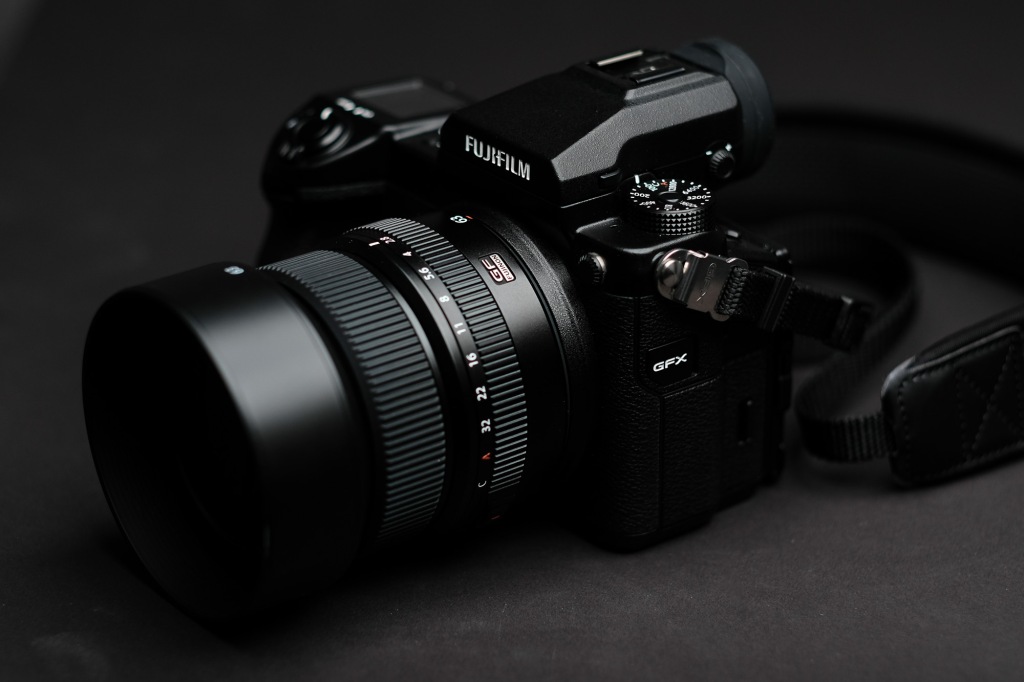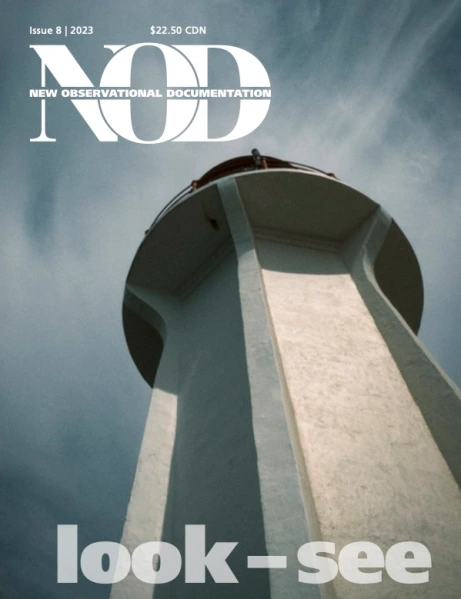Working with mirrorless medium-format
It’s a little too big to use on the street. It’s not quite fast enough to use for action sports. It doesn’t look as cool as the new Hasselblad X1D. There are only a few native lenses available. It has a relatively slow flash synch speed. And it costs over four times as much as the excellent X-T2 and X-Pro2 cameras.
So, what does the new Fujifilm GFX 50S have going for it?
The GFX produces beautiful, luscious, finely-detailed images.
Of course, all of those negative in the first paragraph can be looked at from the other side, which will give you a much different take on the GFX. The same experience I had after first picking up the camera.
Here are some of my first impressions of shooting with the new GFX:
Handling
Out of the box, the GFX is noticeably bigger and heavier than the “regular” sized X-cameras. However, after shooting with the GFX for a few days, it feels completely natural in hand and doesn’t seem too heavy either. The grip is excellent, which makes handling very comfortable. This medium-format camera does feel a little large for some uses on the street, yet I have made photos on the street with it. Just not my normal street photos.
While on the street, I tried continuous autofocus to track fast-moving subjects with the GFX. My results were, hmmm, so-so. No, this camera will not replace the X-T2, or even the X-Pro2, for action photography. Yet, photographers have shot successfully for decades with cameras that couldn’t track fast moving subjects and they still made good action photos. It’s all in how you shoot.
The GFX has a boxy, utilitarian look about it. It probably won’t win any industrial design awards, but the GFX’s form follows function, which is always great in my book. And, it looks, feels and acts like the cameras I most enjoy using. You know the ones. Those cameras with external dials to control exposure parameters. The Hasselblad X1D might appear more stylish, but the GFX’s functional design, and similarity to the X-T2, make it immediately useable, particularly if you are already shooting with an X-camera.
One aspect of handling with the GFX that I’m still coming to grips with is the lack of an exposure compensation dial. I use this all the time on my X-cameras. Upon first using the GFX, I really noticed the absence. After nearly a month of daily use of the GFX, I find that I don’t miss the EV dial as much. This is true in part to the different way I shoot with the medium-format camera versus the smaller X-cameras. Right now, I am on the fence if the GFX needs an EV dial. The camera does have a means of adjusting exposure compensation on the body. First you press or press-and-hold a tiny (very small) button to the right of the shutter release and then scroll the rear command dial to adjust exposure. Doable, but not as elegant and simple as having a dedicated dial.
Another usability aspect of the GFX is flash synch speed. In the studio, I shoot at the GFX’s synch speed of 1/125 second with no problem. Next week, I have an outdoor portrait session scheduled that will require the use of a strobe. I know that I can work around the relatively slow synch speed, but I do wish there was an easy high-speed synch option available. However, I understand that Fuji made the choice between using a leaf shutter, which would allow for very fast synch speeds, and using a focal-plane shutter, which gives them many more options for lens design and opens the door wider for adapting legacy lenses. Since the base ISO is 100, instead of 200 as on the X-cameras, the flash synch issue is not as severe as it might be. Yet, I would like to find a high-speed synch solution.
Lenses
As they did for the launch of the Fujinon XF lenses, Fujifilm has quickly produced five excellent lenses for the G-mount. As of this writing, I own the GF63mm f/2.8 lens and have shot with the GF32-64mm f/4 lens extensively. The 32-64mm lens is really exceptional and I would recommend it, if you are only going to have one lens. I prefer shooting with the 63mm lens because it is small(er), light(er) and fast(er). However, having the zoom range of the 32-64mm lens is really handy for shooting landscapes. In the coming years, I hope to purchase the GF23mm and GF110mm lenses.
In the meantime, I have found an economical solution to having more lenses for the GFX. When I sold my Mamiya 645 film camera, I hung onto three M645 lenses, a 35mm f/3.5, a 120mm f/4 macro and a 150mm f/3.5 lens. To use these three lenses with the GFX, I purchased a M645-GF lens adapter from Fotodiox. I have been very happy with the results produced with all three lenses and particularly the 120mm lenses. The GFX with the Mamiya 120mm lens has become my studio portrait setup. Of course, all of the Mamiya lenses are manual focus on the GFX, but since I prefer to work in manual focus mode with the excellent focusing aids available on the camera, this isn’t a problem.
A word about the Fotodiox adapter. Overall, the build is quite good and it has worked flawlessly with my M645 lenses. However, the tiny tension spring that keeps adapted lens securely clicked into the adapter is not very secure. It fell out after about 2 weeks of use. Fotodiox were exceptional in dealing with the issue, sending me a replacement adapter immediately after I reported the problem. Today, I noticed that the same spring on the replacement adapter was nearly out of it’s groove. I repositioned it, but I wonder how long it will be before the spring dislodges completely. Something to consider.
Image quality
Handling, lens options and usability are all important, but the reason for getting a medium-format camera is the image quality. The GFX delivers. Seeing one of the files for the first time on-screen is astounding. The files are rich, voluminous, textured and finely detailed. The falloff from focus to out of focus is seemingly endless. Dynamic range is a thing of wonder. You can pull and pull and pull detail out of the shadows, if you choose. Or you can let those shadow details just linger in the darkest recesses of the image, suggesting the content that would be lost with a lesser sensor.
But, the irony of reading a review of the GFX’s image quality on web-based medium is that you will never see an example online that does the camera justice. I have posted images produced by the GFX on this blog, on Flickr and on Instagram. Each time I look at those online versions, I am disappointed by the rendering of those photos. The only time I have been happy with output from one of the GFX files is when I have printed it. That’s when I started to see the possibilities for producing something worthy of shooting with this camera.
Of course, there are certain characteristics of a medium-format image that do translate online, but not necessarily as well as I would like. I can see the greater control of depth of field and there is a hint at the extra dynamic range. I just haven’t experienced the wow of seeing the images in Lightroom for the first time, when I later see them rendered small and insignificant online.
Bottom line: cost
Finally, there shouldn’t be a discussion of this camera without including cost. On the one hand, it’s expensive, as are the lenses. On the other hand, it is the most reasonable digital medium-format camera on the market. So, how did I justify purchasing such an expensive, yet affordable camera? I made a leap of faith. I believed that shooting medium-format would afford me a different way of working, producing different and hopefully fulfilling results. I already see that I am working differently with the GFX, slower and more considered. So far, the results have been encouraging, reassuring me that my leap might not have been off as high a precipice as I had feared when I ordered the GFX.
I am also discovering that I can use the GFX much like I use my X-cameras. It isn’t too big to carry around with me on the street. I am just looking for different images with the GFX, because, with it, I am conspicuous. No stealthy street shooting with it!
Is it right for you?
Not great for street or action, the GFX is still a feat of engineering and well worth considering if you are looking to invest in a high-end camera and lenses. The GFX shares so much of the X-camera DNA and functionality, that any X-shooter will immediately feel comfortable with the camera. Given the relatively small size and light weight, the GFX will be used in many applications not normally considered medium-format camera territory. This is one of the reasons that I believe the GFX will forever change the medium-format camera market. It will be up to you to determine if what and how you shoot warrants the investment. When you go the GFX route, you won’t be disappointed with the image quality. The photographic quality will be up to you.
A few sample images follow. I will be posting a more extensive collection from a recent trip to the Olympic National Park in Washington state in the near future.










NB: Sample images captured with the Fujifilm GFX 50S, with a variety of lenses. Photos processed with Lightroom.



5 responses to “Fujifilm GFX 50S Review”
Hi Don, great images. I find I can stare endlessly into #4.
Hey Ross, thanks for commenting. #4 depicts a very lovely spot. I miss it.
Cheers, Don
[…] doncraigphoto – FUJIFILM GFX 50S REVIEW […]
Don,
Great, to-the-point review! I especially like #4 and 5. The image #5 shows “rich, voluminous, textured and finely detailed” files the GFX can produce.
Looking forward to more imagery.
Olaf
Thanks Olaf. Really enjoying shooting with the GFX.